Hi everybody! Here's the 11 in this early season ID guide for South Australian edible mushrooms. This one is about that easy to find, easy to identify Weeping Bolete. There are two lookalikes, one edible and the other inedible. Both are covered at the end of this post.
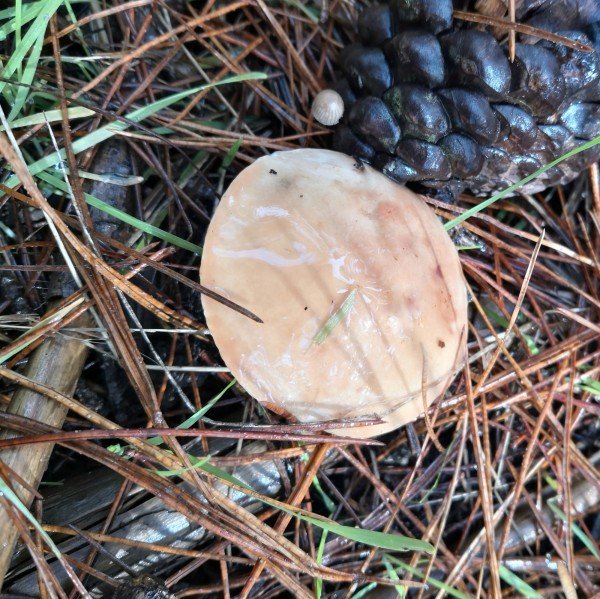
Weeping Bolete (Suillus granulatus)
Phylum: Basidiomycota. Class: Agaricomycetes. Order: Boletales. Family: Suillaceae
Weeping Boletes (Suillus granulatus) are common mushrooms in the Pine forests near Gawler. They’re not as common around here as the closely related and very similar looking Slippery Jack (Suillus luteus) that I covered in the last in this series.
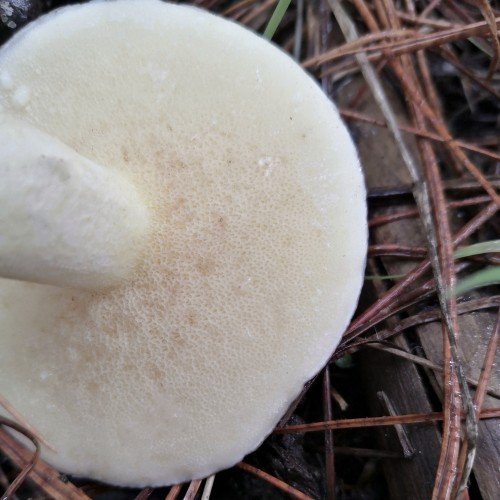
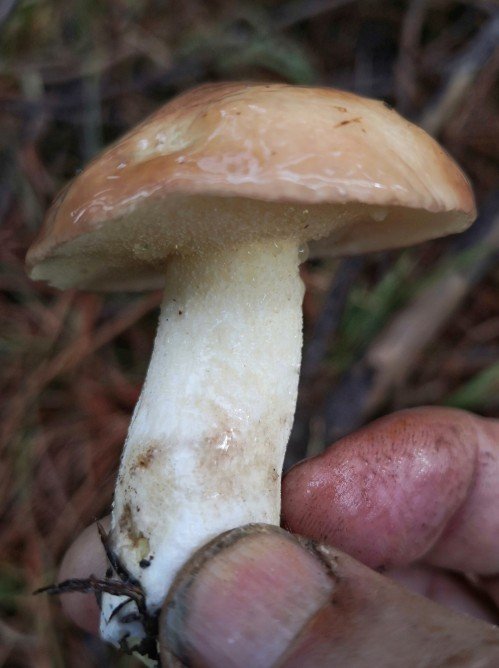
Weeping Boletes seem to be slightly smaller and less common than their cousin but can be found under Pine needles and distinguished straight away by the slippery coating on their cap. The ones I’ve seen also seem to have a light brown cap. All Boletes have a spongy material rather than gills beneath the cap which houses the spores. The name ‘Weeping Bolete’ comes from the fact that they commonly weep a clear or milky liquid from the sponge layer. This dries on the stem to form the granules that give rise to it’s species name ‘granulatus‘.
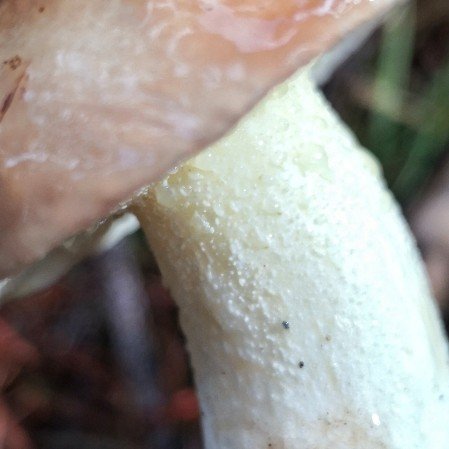
Boletes need to have the outer layer of the cap to be removed before cooking. Fortunately, this is easy to do as it comes away quite easily. Removing this and the spongy layer beneath the cap improves the taste of cooked Boletes too but lots of folks don’t do this because only a little mushroom meat is left after processing.
This is a species that tastes great when dried and powdered. If you’re drying them, you don’t need to remove anything, just slice thinly and dry by your favourite method.
Identifying Weeping Boletes – a summary
Look for Weeping Boletes in Pine forests, where you would find Slippery Jacks, Saffron Milk Capsand Laccaria, all of which have been covered in this series.
- Brown to olive green cap from 5 cm to about 10 cm in diameter
- The cap has a slippery surface, often with pine needles and soil adhering to it
- The outer layer of the cap is easily peeled off
- Yellow/creamy spongy pore material underneath the cap rather than gills
- Thick, pale yellow stem that develops granular texture with age.
- NO annulus on the stem
- Stem is solid in cross section.
- Spore print – yellow/brown
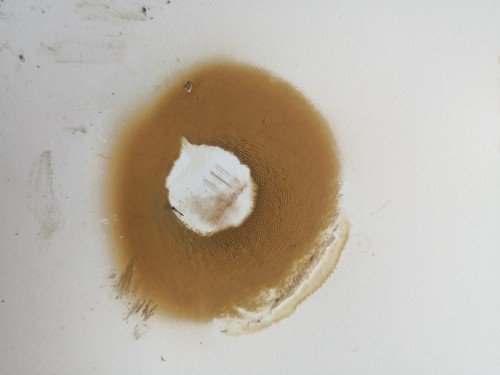
Lookalikes
There are two lookalikes for Weeping Boletes - the edible slippery Jack and the inedible Native Bolete.
Slippery Jacks
Edible Slippery Jacks have a smooth stem on which can be found a purplish veil remnant. They don’t weep clear fluid.


Native Bolete (inedible)
Inedible Native Boletes look similar but aren’t as slippery, have bright orange flesh that stains blue/green when cut. They’re found under Eucalypts but are found here where Pine/Eucalypt forests join so could lead to confusion. Inedible.
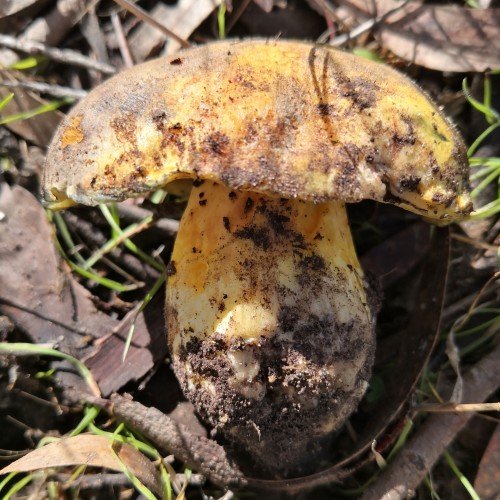
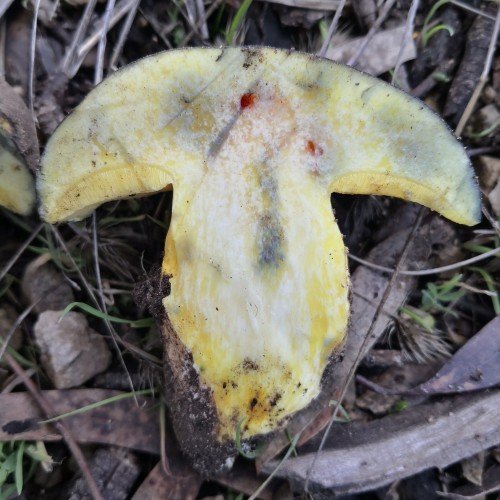








Most of the mushrooms are poisonous or inedible. You have made an amazing comparison of two species.
Here is a park where I have seen few brown mushrooms similar to one mentioned here, but there top and stem both are brown with few black lines.
There are many that are poisonous but there even more that we don't know about the edibility of. Who is willing to take that first bite? 👀
!pizza
Thats why I would never take a fungi to try to eat it!!! it needs to be a specialist lol!! I prefer buying them in the grocery!! thanks for the post
!1UP
By buying them in shops, you are missing out on a huge range of flavours. It's not that difficult to learn the edible ones but you must take one or two trips with a regular mushroom hunter and really get to know one or two species. I only know about 15 but I am 100% certain about identifying those.
It's interesting though that any mushroom can cause a reaction in anybody, even someone who has eaten that variety for years and even shop bought ones. We are more similar, genetically and evolutionarily to fungi than we are to plants. What an amazing world?
You have received a 1UP from @gwajnberg!
@stem-curator, @vyb-curator, @pob-curatorAnd they will bring !PIZZA 🍕
Learn more about our delegation service to earn daily rewards. Join the family on Discord.
Thanks! Looking forward to that pizza!